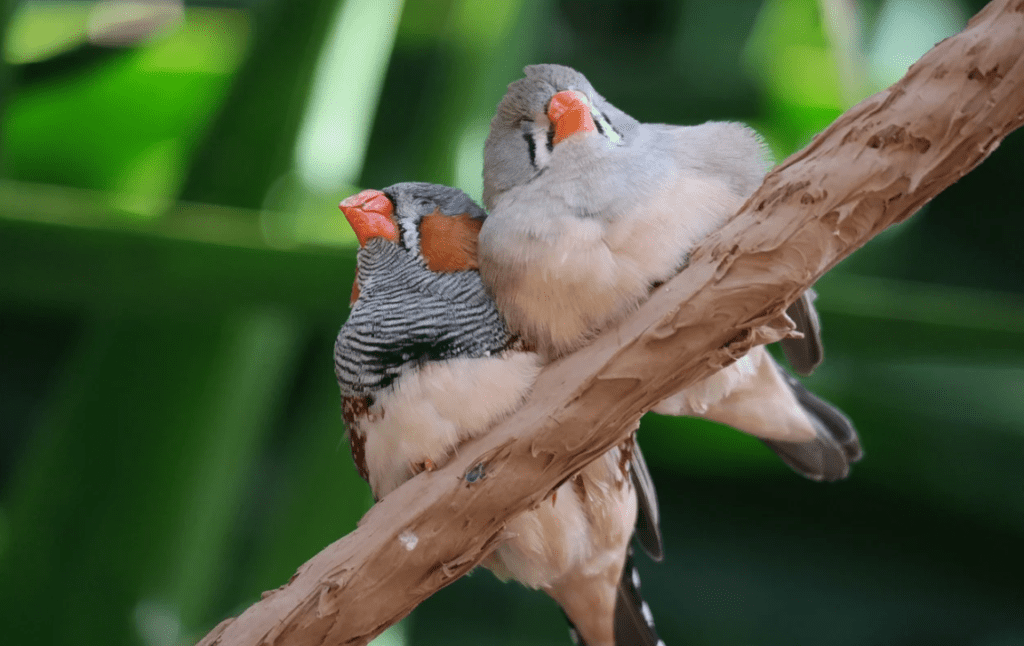Birds, just like artists or athletes, train and finesse their songs. When it’s crunch time, they’d better be ready to bust out their best song — or they may end up not having anyone to mate with. In a new study, researchers have zoomed in on the brains of birds practicing and

Zebra finches are common birds in Australia. They’re loud and boisterous singers, and they spend a lot of time working on perfecting their songs. Male zebra finches will often go about their days practicing their courtship melodies, producing variations and trialing different versions of the song. But when they spot an attractive female zebra finch, they stop screwing around.
Researchers have observed that when the game is on, they always sing a singular, perfected version of their song — no more variations or experiments. Essentially, they produce the best song they can.
Researchers wanted to figure out how they do this and what happens inside their brain once they do, and thanks to a novel approach that allows them to monitor up to a hundred bird neurons at a time, they did.
“To figure out how to move, it needs to first try out many different movements, to try out different ways of accomplishing a goal of moving their body,” said Jonna Singh Alvarado, who led this project for his Ph.D. dissertation at Duke. “They need to learn, ‘If I think this, how am I about to move? How will that move my body?’ and it needs to do that in many variations.”
To the human ear, these differences are subtle and hard to detect, explains Richard Mooney, Alvarado’s thesis advisor. But female zebra finches are very receptive to these subtleties. They dislike practice songs, but a precise game-time song makes them intrigued and attentive.
When the males practice the not-serious song, neurons in an area of the brain called the basal ganglia (which is also responsible for controlling major movements) allow variation in the song. Various neuron circuitries are used, corresponding to different songs. But when it’s go-time, these alternative pathways are shut down by a squirt of the neurotransmitter noradrenaline in the basal ganglia.
“You’ve established this kind of brain-to-movement dictionary, where you’ve explored all these different ways that you can give commands and they can move your body,” said Alvarado, who is now a post-doctoral researcher at Harvard University. “And then, you can exploit the mapping you’ve created. ‘I’ve explored, I have this dictionary, let me grab the right words from this dictionary and perform exactly what I know I can perform, given what I know the female wants to hear.’ “
To keep this ‘best’ song in good shape, a lot of practice is required. Much like a human athlete or artist, birds practice a lot — and also just like in humans, practicing variations helps build a “dictionary” of workable notes that can then be used. The birds explore their vocal range and different musical combinations until they zoom in on the one they want to use. To Mooney, a self-described Jimi Hendrix fan, the males’ practice songs are a bit like Hendrix’s music.
“It kind of goes everywhere, there’s the kernel of one song, but then it sort of morphs. It’s like free jazz or something. And, you know, I think he was just really, really good at exploring when he was alone.”
Of course, tracking the neurons responsible for this is not an easy task. It took a lot of work from a lot of people working in different fields, Mooney explains.
“One of the things that’s been really hard in other animals is to figure out what the link is between the variability you’re producing, and the variability you want to produce,” said John Pearson, an assistant professor of biostatistics and bioinformatics at Duke, who led the statistical analysis of the neurons. “This is the first time that people have gotten a real sizable population of these cells, and we can begin to try to link the variability in vocal performance to the variability in neural activity.”
In addition to understanding how birds do things, this type of study could also be useful from a human perspective. The basal ganglia are present in all vertebrates, and in humans, it’s linked to conditions such as Parkinson’s, Huntington’s disease, and Tourette’s syndrome, among others. Understanding
But the work is important because insight into the bird’s basal ganglia has direct relevance to human movement disorders, including Parkinson’s and Huntington’s diseases, Tourette’s syndrome, and others, Mooney said. Understanding how basal ganglia neurons function normally and what happens when they malfunction is paramount to understanding how these conditions take shape — and how they can be fixed.
Journal Reference: Alvarado et al, Neural dynamics underlying birdsong practice and performance, Nature (2021). DOI: 10.1038/s41586-021-04004-1










